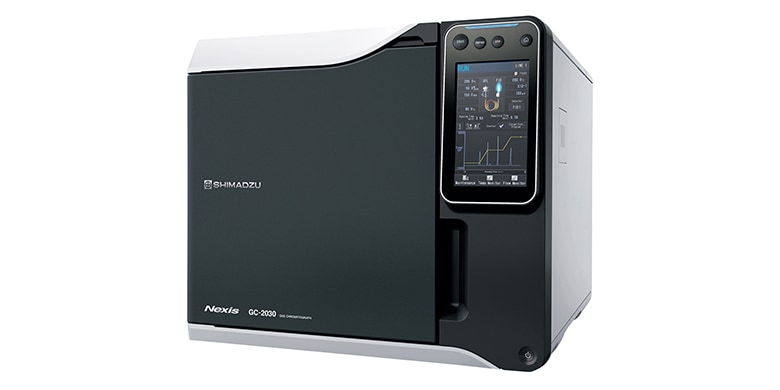
Nexis™ GC-2030
・The simultaneous analysis of ethylene oxide (EO), ethylene chlorohydrin (ECH), and ethylene glycol (EG), which are residues by EOG sterilization, is possible. ・The requirements of gas chromatograph measurements for EO and ECH described in JIS T 0993-7: 2012 were satisfied.
Ethylene oxide gas (EOG) is a flammable and colorless gas commonly used for medical device sterilization. Its permitted maximum residual levels are set by a range of international and local organizations, including the International Organization for Standardization (i.e., ISO 10993-7:2008) and Japanese Industrial Standards (i.e., JIS T 0993-7:2012). EOG sterilization produces not only ethylene oxide (EO) residues, but also secondary compounds such as ethylene chlorohydrin (ECH) and ethylene glycol (EG) during the sterilization process. In these standards, allowable limits are specified for EO and ECH. Extraction can be either exhaustive or simulated-use. Exhaustive extraction entails a solvent extraction and allows a choice between the following two instrument configurations: the gas chromatograph (GC) and the headspace (HS) -GC. In this article, the simultaneous analysis of EO, ECH, and EG by GC was performed with reference to JIS T 0993-7:2012, assuming a simulated-use or exhaustive extraction with water as an extraction solvent.
June 15, 2023 GMT
Some products may be updated to newer models